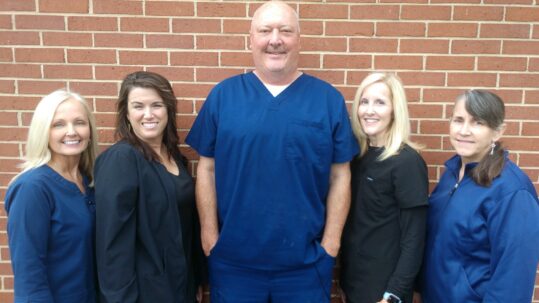
15 Oct Who invented Braces?
The history of braces is a captivating journey that spans centuries, reflecting humanity’s enduring quest for dental perfection. From the rudimentary techniques of ancient civilizations to the sophisticated technology of modern orthodontics, the evolution of braces highlights significant advancements in dental science. Key figures like Pierre Fauchard and Christophe-Francois Delabarre pioneered early orthodontic devices, while Edward Angle’s innovations in the late 1800s laid the groundwork for today’s treatments.
This exploration delves into the contributions of these visionary individuals and the cultural practices that shaped orthodontics. By understanding the historical milestones of braces, we gain insight into the remarkable progress in dental health and aesthetics, appreciating how past efforts have paved the way for contemporary solutions. The journey of braces is not just about aligning teeth but also about the relentless human spirit to innovate and improve well-being across generations.
Christophe-Francois Delabarre and the Wire Crib
Christophe-Francois Delabarre is often credited with inventing the first modern braces. In 1819, he created the “wire crib,” a device made of woven wire designed to fit over the teeth. This half-circle apparatus aimed to keep teeth in alignment, marking a significant step toward the braces we know today. Delabarre’s invention was revolutionary for its time, providing a method to correct dental alignment issues that were previously unaddressed.
The wire crib, though rudimentary by today’s standards, was a pioneering effort that laid the groundwork for future advancements in orthodontics. By creating a device specifically designed to alter the position of teeth, Delabarre set the stage for more sophisticated developments in dental technology. His work demonstrated the potential for mechanical devices to improve dental health and aesthetics, making him a pivotal figure in the history of braces.
Pierre Fauchard and the Bandeau
Before Delabarre, there was Pierre Fauchard, often called the father of modern dentistry. In 1728, Fauchard introduced the “bandeau,” a horseshoe-shaped piece of metal designed to expand the dental arch and straighten teeth. Though it was uncomfortable and didn’t gain widespread use, the bandeau was a crucial early attempt at orthodontic treatment. Fauchard’s work was significant because it represented one of the first systematic approaches to correcting dental irregularities.
His bandeau, while primitive, showed that it was possible to manipulate the position of teeth using external devices. This early innovation inspired future developments in orthodontic techniques and devices. Fauchard’s contributions were foundational, influencing the direction of dental science and helping to shape the field of orthodontics. His pioneering spirit and dedication to improving dental health set a precedent for future innovations in the field.
Ancient Egyptian and Etruscan Contributions
The quest for straight teeth dates back thousands of years, long before modern orthodontics emerged. Archaeologists have discovered mummies in Egypt with cords made from animal intestines wrapped around their teeth, resembling modern braces. These ancient Egyptians sought to preserve their teeth in death as a reflection of their desire for an ideal afterlife. Similarly, the Etruscans, who lived in Italy before the Romans, also contributed to early orthodontics.
They used gold bands to keep teeth in place, primarily for cosmetic reasons in the afterlife. These bands were often found in tombs, suggesting that dental aesthetics were important to them even after death. These ancient practices show that the desire for straight teeth is not a modern phenomenon. Both cultures demonstrated an early understanding of the importance of dental appearance and the potential for mechanical intervention in maintaining dental alignment. Their contributions provide a fascinating glimpse into the early history of orthodontics, showing that the quest for a perfect smile is truly timeless.
Edward Angle and Modern Orthodontics
Edward Angle is often referred to as the “Father of Modern Orthodontics.” In the late 1800s, he developed the classification system for malocclusions (bad bites) that is still in use today. Angle’s system provided a standardized method for diagnosing and treating dental misalignments, which was a significant advancement for the field. His classification system allowed for more precise and effective treatments, paving the way for modern orthodontics. Angle also created several orthodontic devices and established orthodontics as a specialized field within dentistry.
His contributions went beyond technical innovations; he also played a key role in the education and professionalization of orthodontics. By founding the first school of orthodontics and publishing influential texts, Angle ensured that future generations of dentists could build upon his work. His efforts laid the foundation for the modern braces we use today, making significant strides in both technique and education. Angle’s legacy is evident in the widespread adoption of his methods and the continued use of his classification system in contemporary orthodontics.
Conclusion
The history of braces is a fascinating journey through time, involving various cultures and key figures. From ancient Egyptians and Etruscans to pioneers like Christophe-Francois Delabarre and Edward Angle, the quest for straight teeth has evolved significantly. Each of these inventors and their contributions have played a crucial role in shaping the modern orthodontic treatments we benefit from today. The progression from simple wire cribs and bandeaus to sophisticated, customized braces and aligners demonstrates the incredible advancements in dental technology and understanding.
The journey of orthodontics is a testament to human ingenuity and the relentless pursuit of improvement in health and aesthetics. By studying the history of braces, we can appreciate the complexity and dedication involved in developing the treatments that are now commonplace. This historical perspective not only highlights the advancements in dental science but also underscores the continuous effort to enhance human well-being through innovation.
Chattanooga Family Dental is your hub for all things dental. We prioritize your health regardless of your needs. Schedule an appointment with us today!

About Our Team
Our team of dental experts has well over 30 years of combined experience in the field of dentistry. To learn more about them, please visit our team page or stop by the clinic and say hello!
